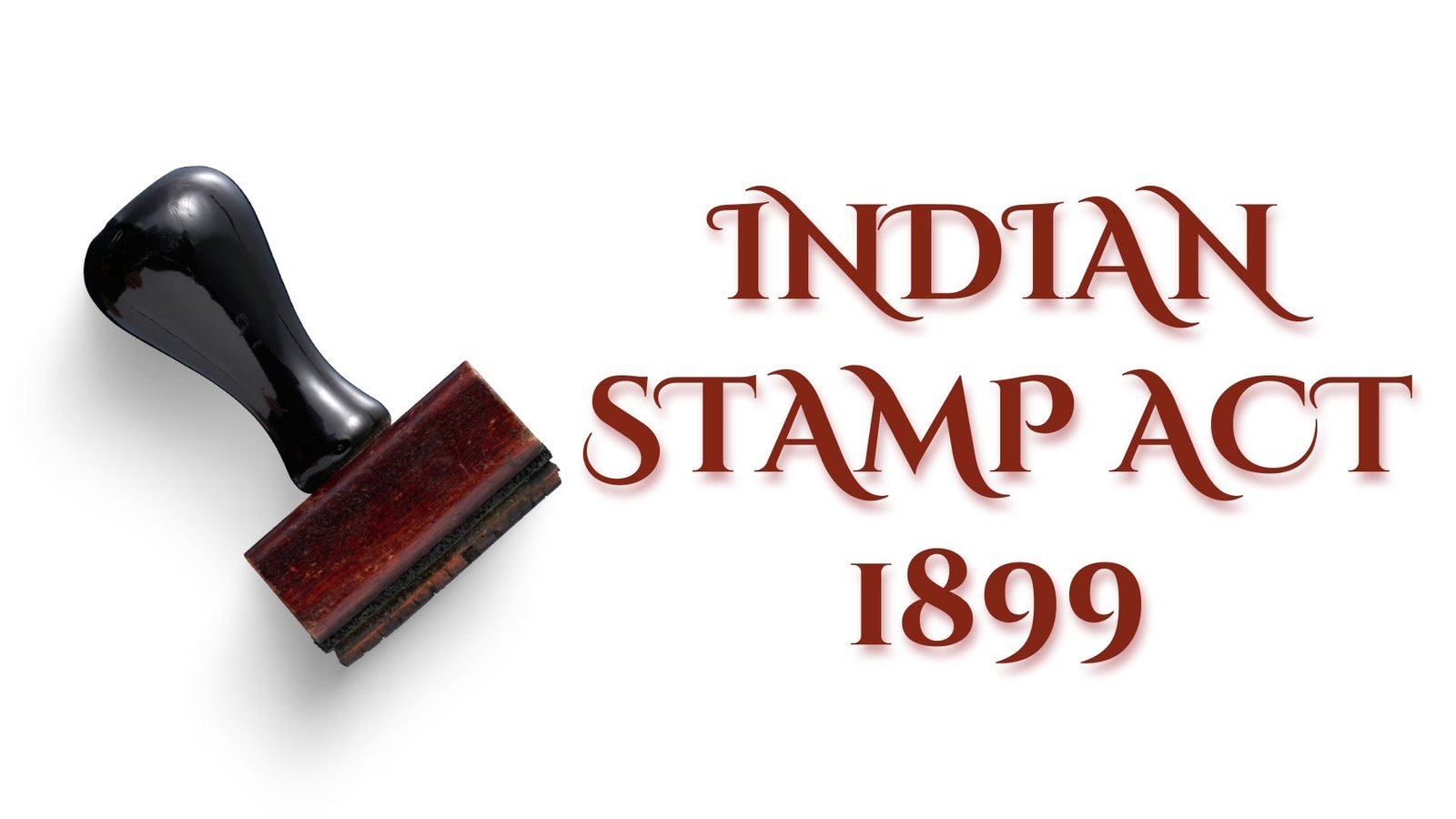On this page you will read detailed information about The Stamp Act 1765.
You open your mailbox and pull out the latest issue of your favorite magazine. As you flip through the pages, eager to read the articles, you notice something different. There is now a tax stamp affixed to each page, and your magazine cost twice as much as normal. This extra tax on printed paper is similar to what American colonists faced in 1765 with the Stamp Act. The British Parliament passed this act to help pay for troops stationed in the colonies. The required tax stamps on printed materials outraged many colonists and became a significant factor leading to the American Revolution. In this article, you will learn more about the specific causes and far-reaching effects of this controversial tax.
What Was the Stamp Act of 1765?
The Stamp Act of 1765 was a tax imposed by the British government on the American colonies. The act required colonists to pay a tax on printed materials such as legal documents, newspapers, and playing cards. Revenue from the tax was used to help pay for British troops stationed in the colonies.
Taxation Without Representation
The Stamp Act angered colonists who objected to being taxed by a parliament that did not represent them. The rallying cry of “no taxation without representation” reflected the colonists’ desire for political representation and input on taxes imposed on them. Colonists argued that only their local colonial legislatures had the right to levy internal taxes. The Stamp Act was seen as an unacceptable overreach of power by many colonists.
Protests and Boycotts
The Stamp Act incited protests in the colonies, especially by the Sons of Liberty. Colonists organized boycotts of British goods and intimidated tax collectors and stamp distributors. The Stamp Act Congress, a meeting of representatives from nine colonies, produced a resolution stating that Parliament could not tax colonists without colonial representation. Bowing to pressure, Parliament repealed the Stamp Act in 1766 but issued a Declaratory Act asserting its authority over the colonies.
Lasting Impacts
Although short-lived, the Stamp Act had a lasting impact on the relationship between Britain and its American colonies. It demonstrated to colonists the power of protest and political organization. It also convinced Britain that the costs of enforcing such unpopular policies outweighed the financial benefits. More broadly, the Stamp Act crisis highlighted the political issues that would ultimately lead to the American Revolution, especially the limits of Parliament’s authority over the colonies. Overall, the Stamp Act left a legacy of heightened tensions and resentment on both sides of the Atlantic.
In summary, the Stamp Act of 1765 was a pivotal moment in the growing divide between Britain and its American colonies. It unified colonists in protest against unjust taxation and helped define the political issues that would shape the coming Revolution.
In the previous post, we had shared information about The Townshend Act of 1767: An Analysis, so read that post also.
Causes of the Stamp Act
The British Parliament’s passage of the Stamp Act in 1765 was the result of a combination of factors, including the enormous debt incurred from the French and Indian War and the desire to more strictly regulate colonial trade.
War Debt
The Seven Years’ War between Britain and France (known in the colonies as the French and Indian War) was very costly to Britain. The British national debt nearly doubled as a result of the war, rising to £137 million. Parliament felt that since the colonists benefited from the British victory, they should help pay the costs. The Stamp Act was designed to generate revenue from the colonies to help defray these costs.
Regulating Trade
British mercantilist policy held that the colonies existed for the benefit of the mother country. However, British authorities felt that the colonial economy had become too independent. The Stamp Act enabled Parliament to assert its authority over the colonies to regulate trade for the benefit of British commerce. The funds raised were a secondary consideration.
Taxation Without Representation
The Stamp Act incensed colonists because they had no direct representatives in Parliament to consider their interests. Colonists argued that they could only be taxed by representatives they had elected. The rallying cry “no taxation without representation” came to symbolize their protests against the unjust taxes imposed by a distant Parliament indifferent to their concerns.
Colonial Economic Interests
The Stamp Act also threatened the economic interests of various groups like printers, lawyers, merchants, and shipowners. These taxes made it more expensive to conduct business, and colonial businessmen feared the loss of trade as a result. Their protests against the Stamp Act helped raise broader public opposition.
The passage of the Stamp Act in 1765 thus resulted from a combination of factors, including the need to address post-war debt, the desire to regulate imperial trade, and the disregard for the principle of consent and colonial economic interests. This combination of grievances ignited a firestorm of protest in the colonies that marked a turning point in the relationship between Britain and its American subjects.
Key Provisions of the Stamp Act
The Stamp Act of 1765 imposed a tax on legal documents, newspapers, and playing cards in the American colonies. The goal of the act was to raise funds to support the standing British army in America. However, the Stamp Act ultimately led to widespread protest in the colonies and was repealed in 1766.
Tax on Printed Materials
The Stamp Act placed a tax on a wide variety of printed materials, including legal documents, newspapers, pamphlets, and playing cards. The tax amount depended on the type of document. Revenue stamps had to be purchased and affixed to the printed materials to show the tax had been paid before the materials could be used or sold. Many colonists argued this tax violated their rights as Englishmen.
Effects on Commerce
The new stamp taxes disrupted commerce in the colonies. Many newspapers and pamphleteers went out of business rather than pay the tax. Lawyers could not practice without using stamped legal documents, and many courts closed down. Merchants avoided using stamped receipts and other commercial papers, hindering trade.
Protests Erupt
In response to the Stamp Act, the Virginia House of Burgesses passed resolutions arguing that only the colonial legislatures had the right to tax the colonists. The Stamp Act Congress, with delegates from nine colonies, articulated the principle of “no taxation without representation.” Protesters formed groups like the Sons of Liberty, who mobbed stamp distributors and destroyed stamps.
Repeal and Legacy
The protests and disrupted commerce convinced the British Parliament to repeal the Stamp Act in 1766. However, Parliament still insisted it had the right to tax and legislate for the colonies “in all cases whatsoever.” Tensions would continue to mount until the American Revolution a decade later. The Stamp Act crisis established that the colonists would resist direct taxes imposed on them by a distant Parliament in which they had no representation.
In summary, the Stamp Act provoked an uproar in the American colonies and led to the first major colonial protest of British rule. It demonstrated the power of united action against perceived tyranny.
Colonial Reactions to the Stamp Act
Anger Towards “Taxation Without Representation”
The Stamp Act of 1765 angered American colonists who believed it violated their rights as Englishmen. They argued that Parliament did not have the authority to tax them because the colonists did not have representation in Parliament. The rallying cry of “no taxation without representation” reflected the colonists’ view that they should not be taxed by a governing body in which they did not have a say.
Boycotts and Protest Movements
In response to the Stamp Act, the colonists organized boycotts of British goods and protest rallies. The Sons of Liberty, a secret organization of American patriots, helped coordinate resistance to the Stamp Act. They incited riots, burned effigies of tax collectors, and pressured stamp distributors into resigning. The Daughters of Liberty, a group of women in Boston, also boycotted British imports like tea, cloth, and luxury goods. These nonimportation movements hurt British merchants and helped unite the colonists in opposition to British policy.
Repeal of the Stamp Act
The boycotts and protests were effective. British merchants who traded with the colonies pressured Parliament to repeal the Stamp Act. In 1766, Parliament voted to repeal the act. However, they also passed the Declaratory Act, which asserted Parliament’s authority to make laws binding on the colonists “in all cases whatsoever.” The colonists’ victory was tempered by the lingering issue of parliamentary authority in the colonies.
The Stamp Act crisis demonstrated the power of economic protest and helped unite the colonists in resisting unjust taxes and in opposition to “taxation without representation.” At the same time, it highlighted the central issue that would ultimately lead to revolution—the authority of Parliament over the American colonies. The colonists’ reaction to the Stamp Act paved the way for growing tensions with Britain in the coming decade.
The Stamp Act Congress
The Stamp Act Congress was a meeting held in October 1765 in New York City, consisting of representatives from some of the Thirteen Colonies. The congress met in response to the Stamp Act 1765, passed by the British Parliament, which imposed a direct tax on the colonies by requiring that many printed materials in the colonies be produced on stamped paper produced in London and carrying an embossed revenue stamp.
Formation and Purpose
The Stamp Act Congress formed in 1765 in response to the Stamp Act. The purpose of the congress was to assert the rights of the American colonists as British subjects and to claim exemption from direct taxation by Parliament. Representatives from nine colonies met to draft a resolution to send to Parliament. While some delegates favored submission, the majority wanted to assert their rights. The congress produced a “Declaration of Rights and Grievances,” claiming that Parliament could not tax colonists without proper representation.
Outcomes and Impact
The resolutions and declarations expressed the rights of the colonists and listed colonial grievances regarding taxation without proper representation. The congress urged merchants to boycott British goods in protest of the Stamp Act. These organized actions of protest and resistance further united the colonists in opposition to Parliament’s direct taxation and helped lay the groundwork for future congresses that shaped the path toward revolution.
The Stamp Act Congress was the first step toward inter-colonial cooperation and helped set the direction of future relationships with Great Britain. The congress demonstrated the power of unified action by the colonists in achieving a common purpose. By coming together to affirm their rights and voice opposition to the Stamp Act, the delegates took the first step down the road that would eventually lead to revolution.
Repeal of the Stampa Act
The Stamp Act of 1765 lasted a mere 15 months before its repeal in March 1766. The widespread opposition in the American colonies made it clear the act was unenforceable. The mounting costs of continued unrest pushed the British government to retract the act.
The Stamp Act Congress convened in October 1765 with delegates from nine colonies. The congress issued a “Declaration of Rights and Grievances,” articulating the view that only colonial legislatures could tax colonists. Colonists threatened violence against stamp distributors, forcing many to resign. The Sons of Liberty and similar groups used intimidation tactics to prevent the act’s enforcement.
The British government grasping the severity of the issue with its authority in peril, Parliament held a hearing in January 1766 to consider repeal of the Stamp Act. Witnesses like Benjamin Franklin argued that the Stamp Act would never be accepted in America. In March 1766, Parliament voted to repeal the Stamp Act, believing it was more prudent to appease the colonists.
Repeal of the stamp act was met with celebrations in the colonies and the belief that their protests had restored liberty. However, the Declaratory Act, passed with the repeal, asserted Parliament’s authority to make laws binding on the colonies “in all cases whatsoever.” Tensions eased temporarily, but within a decade, protests arose again in response to new taxes passed to pay for the French and Indian War, demonstrating the gulf between British aims and American expectations of self-government.
The repeal of the Stamp Act showed Britain the depth of colonial opposition to being taxed without consent or representation. For the colonists, the repeal reinforced the effectiveness of protest and economic pressure as a means of dissent. While not realizing it at the time, this victory marked a step toward the American Revolution as colonists gained confidence in defying unpopular British policies. Overall, the brief but pivotal Stamp Act brought to light irreconcilable differences in how the British and Americans viewed power and rights within the empire.
Effects and Legacy of the Stamp Act
The Stamp Act of 1765 had significant consequences on the relationship between the American colonies and the British government. The most immediate effect was the outrage expressed by colonists who resented this direct taxation by Parliament. The Stamp Act Congress formed in October 1765 as representatives from nine of the colonies gathered to draft a resolution stating their objections. They argued that direct taxation of the colonies by Parliament was unconstitutional without proper representation.
Protests and riots erupted throughout the colonies. The Sons of Liberty, a secret organization opposed to the Stamp Act, used violence and intimidation to force stamp distributors to resign. They also organized more peaceful protests like the hanging of effigies of royal officials. The colonists came together in opposition through non-importation agreements, refusing to buy British goods. This movement highlighted the spirit of unity between the colonies.
Due to the significant colonial resistance, Parliament repealed the Stamp Act in March 1766. However, they still passed the Declaratory Act, asserting their authority to make laws binding the colonies. The repeal of the Stamp Act was a temporary reprieve. Tensions between the colonists and Britain continued to mount over subsequent taxation acts, like the Townshend Acts of 1767, eventually leading to the American Revolution.
The Stamp Act left a legacy of resentment in the American colonies toward unjust taxation and tyranny. It set the precedent for later acts of opposition and helped form a nascent sense of shared purpose between the colonists. The arguments formulated against this act, especially the rallying cry of “no taxation without representation,” became foundations of revolutionary ideology. Overall, the Stamp Act was a pivotal moment that shaped the political future of America.
The Stamp Act in the American Revolution
The Stamp Act of 1765 was passed by British Parliament to raise revenue from the American colonies. The act required colonists to purchase a stamp for every document they printed, which included newspapers, pamphlets, and legal documents. The funds raised from the Stamp Act were used to support British troops stationed in the colonies.
Colonists vehemently opposed the Stamp Act, believing that Parliament did not have the right to tax them when they lacked representation. The colonists argued that “no taxation without representation” was a violation of their rights as British citizens. In protest, the Sons of Liberty formed, threatening violence against British officials. Merchants also threatened to boycott British goods.
Due to the outrage, the Stamp Act was repealed in 1766. However, Parliament then passed the Declaratory Act, asserting their authority to make laws binding the colonists “in all cases whatsoever.” Tensions continued to rise as Parliament imposed new taxes on imported goods like paint, glass, lead, and tea.
The Stamp Act crisis highlighted the key ideological differences between Britain and the colonists that eventually led to the American Revolution. The British believed they had full authority over the colonies, while the colonists believed their rights as citizens were being violated. The repeal of the Stamp Act showed the power of colonial protest and resistance. However, it did not resolve the underlying dispute over taxation and self-governance.
The Stamp Act served as a catalyst for greater dissent against unfair “taxation without proper representation.” It awakened the colonists to their shared interests in resisting unjust laws imposed by a distant Parliament and helped unify them in opposition to Britain. Overall, the Stamp Act was a pivotal event on the road to the American Revolution.
FAQs About the Stamp Act: Your Top Questions Answered
The Stamp Act of 1765 was a controversial law passed by the British government that required colonists in America to pay a tax on printed documents like legal papers, newspapers, and playing cards. You likely have some questions about this pivotal moment in American history. Here are answers to some of the most frequently asked questions about the Stamp Act:
The Stamp Act placed a tax on a wide variety of paper goods and official documents. This included legal documents, licenses, newspapers, pamphlets, and playing cards. The tax amount depended on the type of document and was payable in British currency, not colonial money.
The Stamp Act was very unpopular for several reasons. First, the colonists argued that they should not be taxed without proper representation in Parliament. The rallying cry of “no taxation without representation” summarized the colonists’ objections. Second, the Stamp Act imposed a direct tax on the colonists, unlike previous taxes on trade goods. Third, the Stamp Act ignited fears that the British government had unlimited power to tax the colonists.
The colonists protested the Stamp Act through legal petitions, boycotts of British goods, and violence. Lawyers argued the Act was unconstitutional. Merchants boycotted British imports, and commoners rioted. In Boston, protesters destroyed the home of the Act’s tax collector. The protests were so effective that the Stamp Act was repealed in 1766. However, the repeal was accompanied by the Declaratory Act, which asserted Britain’s power to make laws binding the colonies.
The Stamp Act crisis marked a pivotal moment in the growth of revolutionary fervor in America. While the tax itself was relatively small, its implications were huge. The determined and impassioned colonial resistance showed Britain that Americans were prepared to fight for their rights and set the stage for the American Revolution.
Conclusion
Looking back, it is clear to see the far-reaching impacts of the Stamp Act of 1765. As you have learned, this act by the British Parliament required American colonists to pay a tax on printed materials, which angered many citizens. The tax was eventually repealed, but not before setting off protests and motivating American leaders to begin considering independence. The Stamp Act became a symbol of tyranny and helped galvanize opposition to British rule. When studying this period of history, the Stamp Act stands out as a critical turning point on the road to the American Revolution. As it ignited outrage and rebellion, its influences can still be felt today in the values of liberty and anti-authoritarianism that define the American spirit.
Disclaimer
The information and services on this website are not intended to and shall not be used as legal advice. You should consult a Legal Professional for any legal or solicited advice. While we have good faith and our own independent research to every information listed on the website and do our best to ensure that the data provided is accurate. However, we do not guarantee the information provided is accurate and make no representation or warranty of any kind, express or implied, regarding the accuracy, adequacy, validity, reliability, availability, or completeness of any information on the Site. UNDER NO CIRCUMSTANCES SHALL WE HAVE ANY LIABILITY TO YOU FOR ANY LOSS OR DAMAGE OF ANY KIND INCURRED AS A RESULT OR RELIANCE ON ANY INFORMATION PROVIDED ON THE SITE. YOUR USE OF THE SITE AND YOUR RELIANCE ON ANY INFORMATION ON THE SITE IS SOLELY AT YOUR OWN RISK. Comments on this website are the sole responsibility of their writers so the accuracy, completeness, veracity, honesty, factuality and politeness of comments are not guaranteed.
So friends, today we talked about The Stamp Act 1765, hope you liked our post.
If you liked the information about The Stamp Act 1765, then definitely share this article with your friends.









